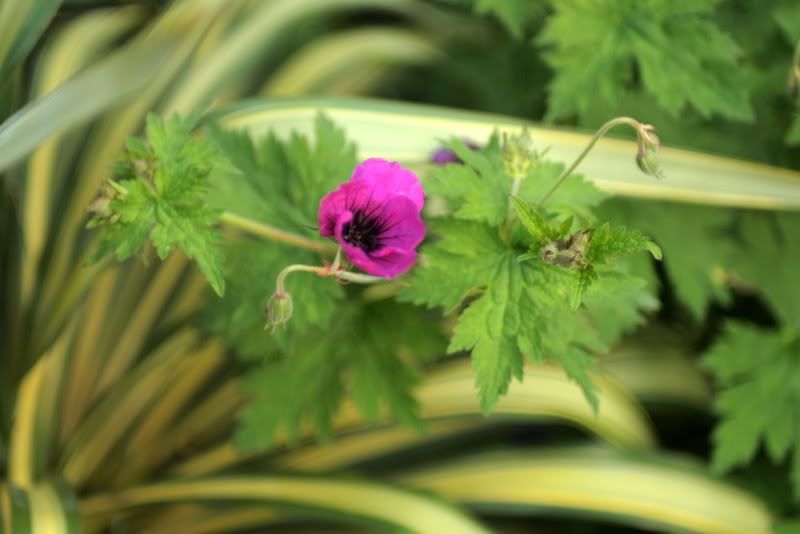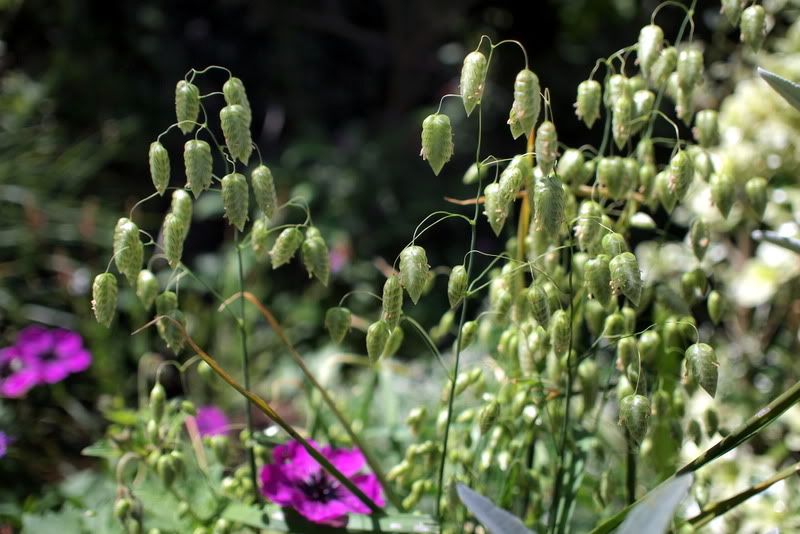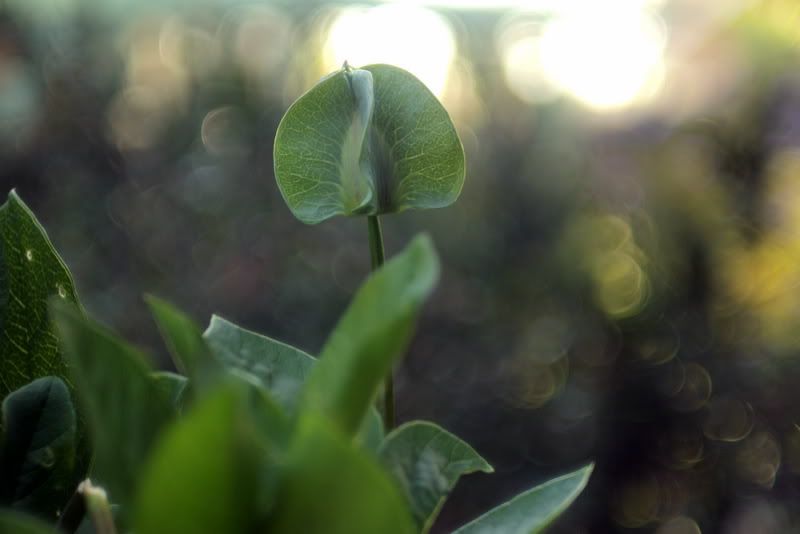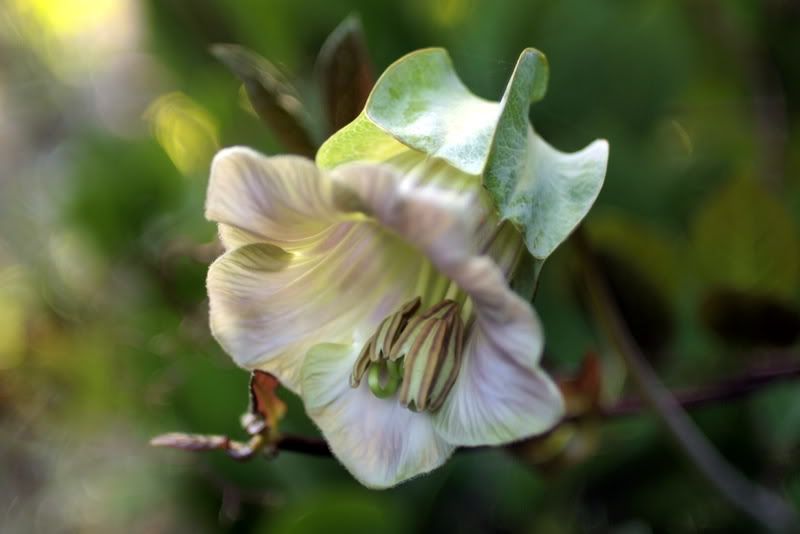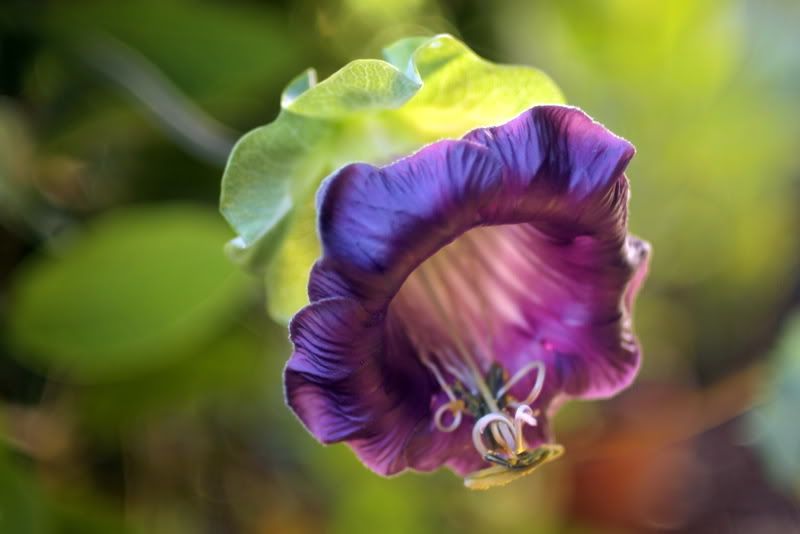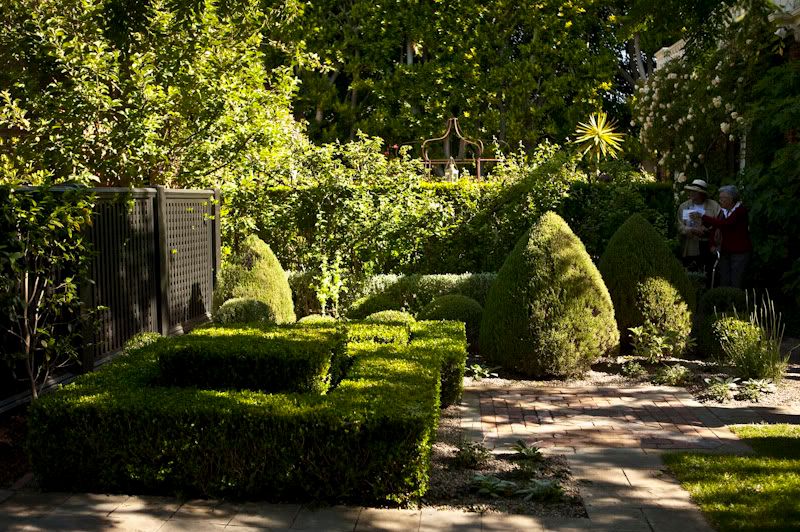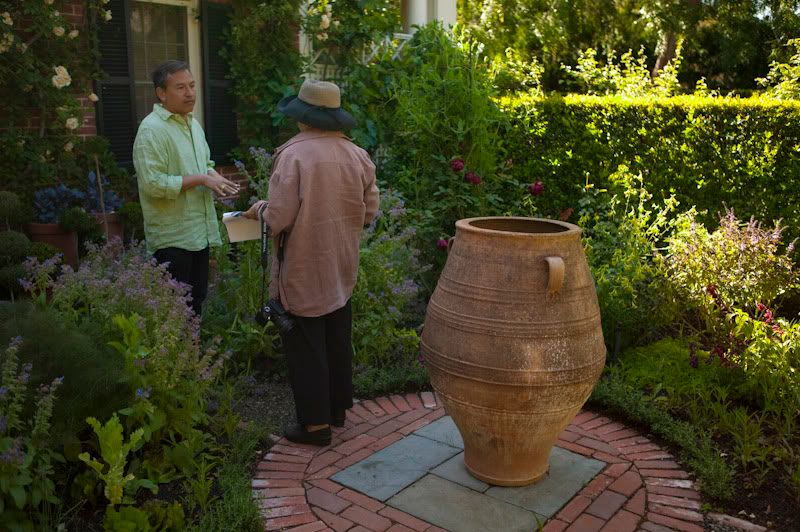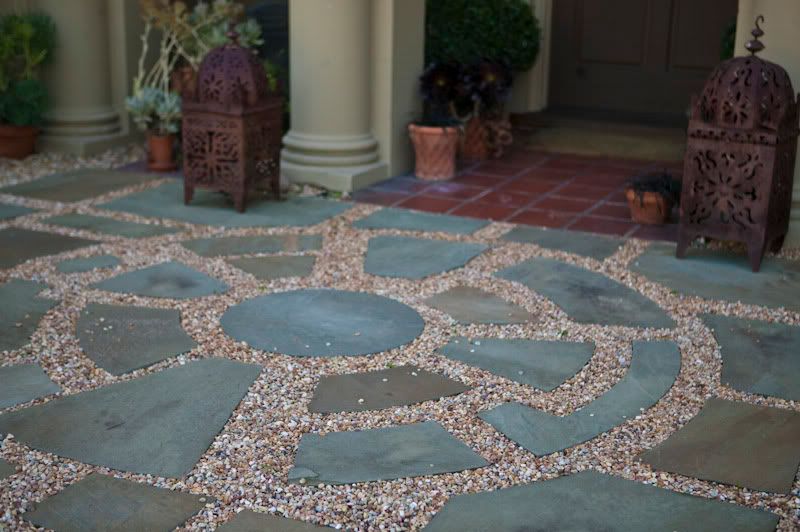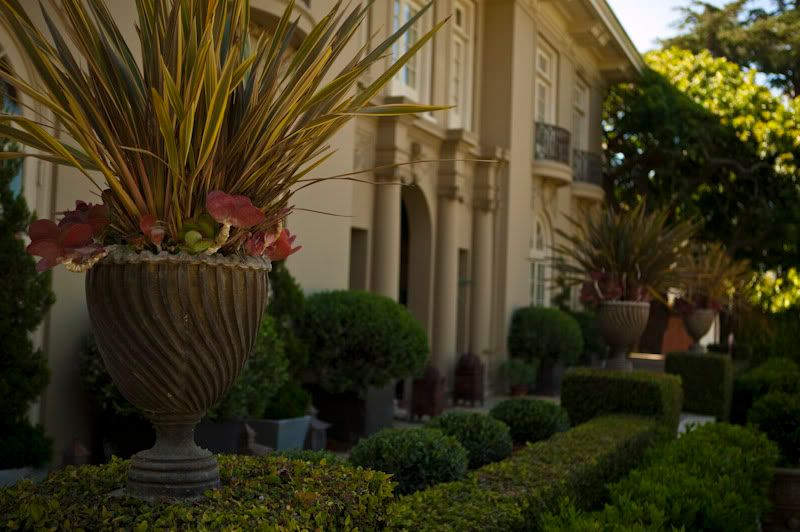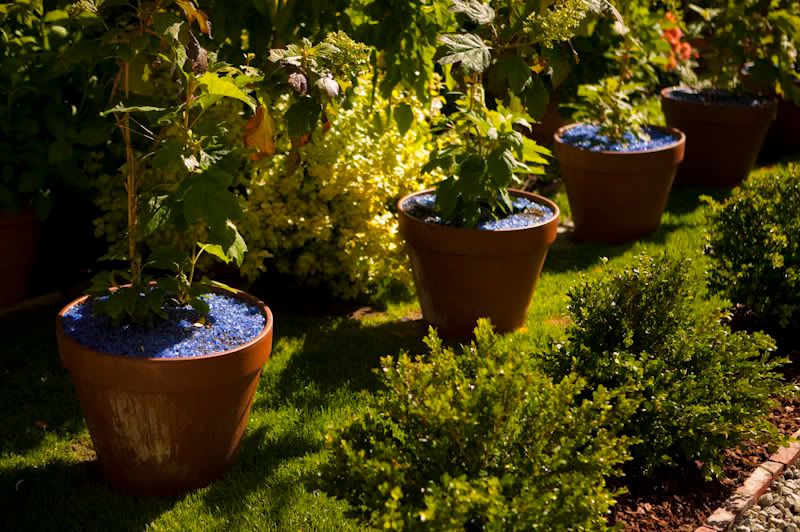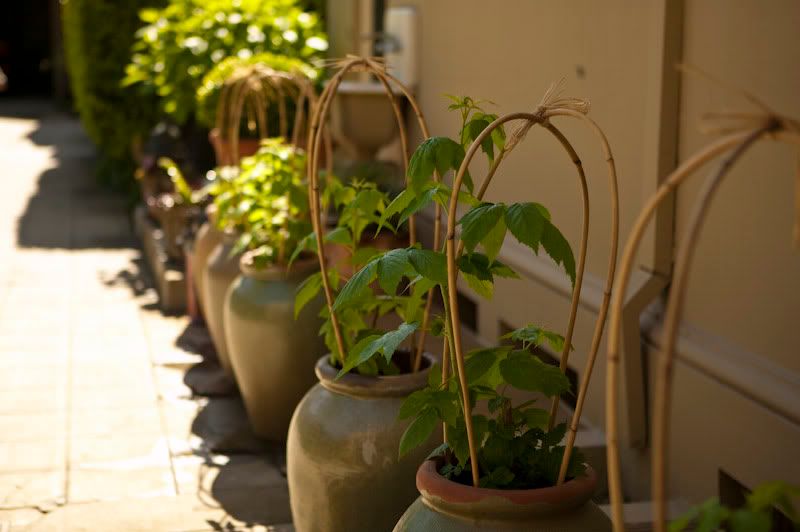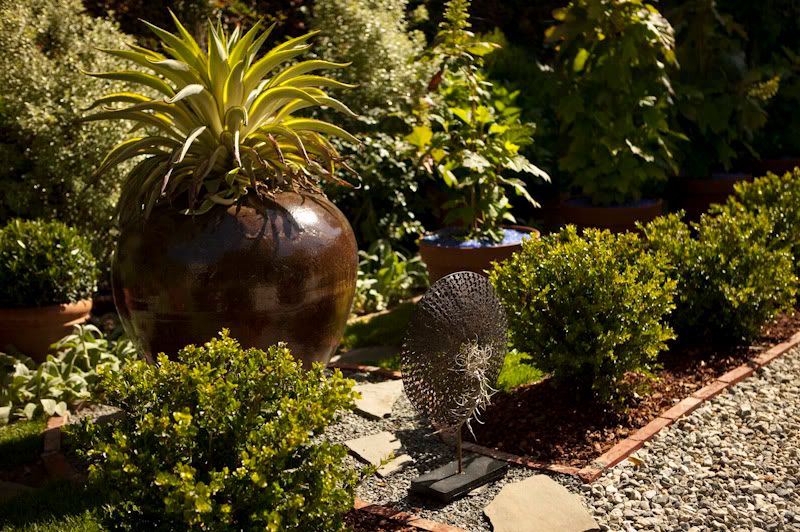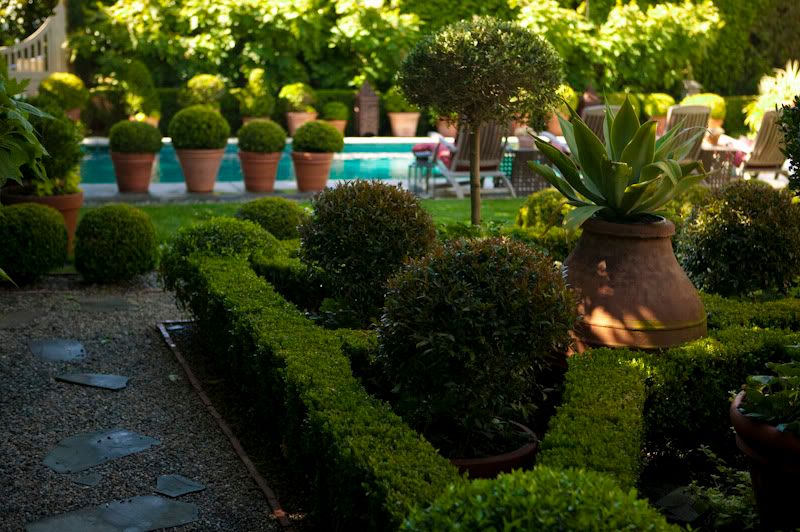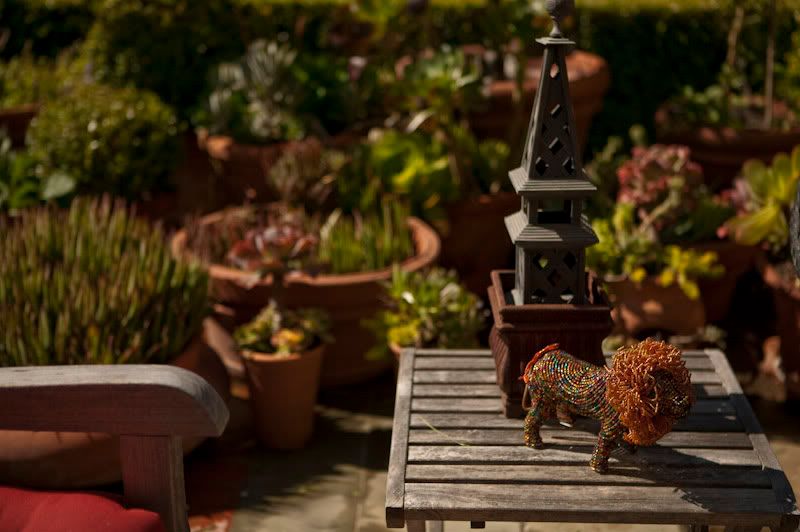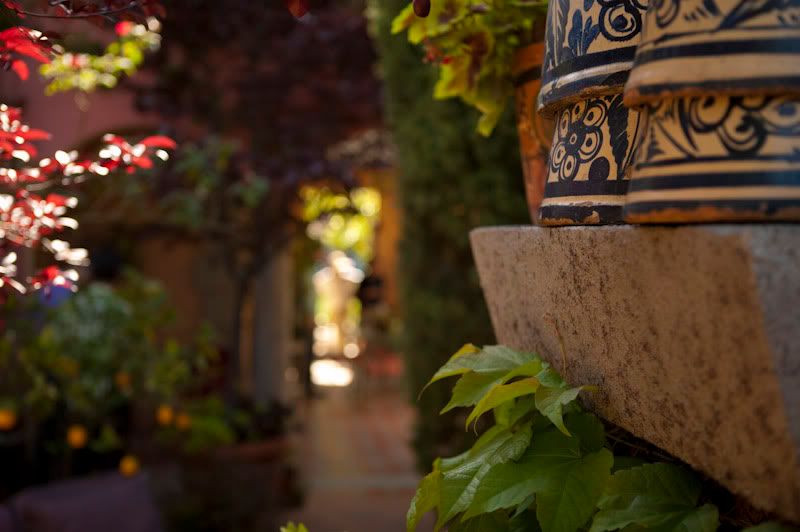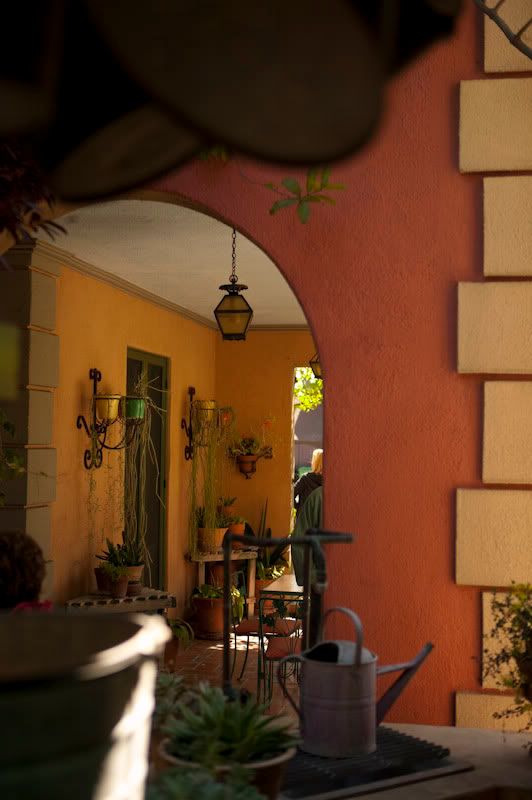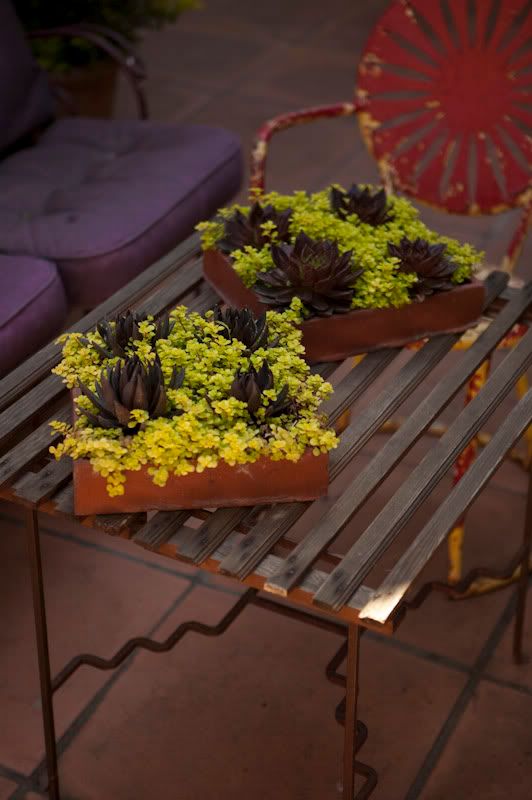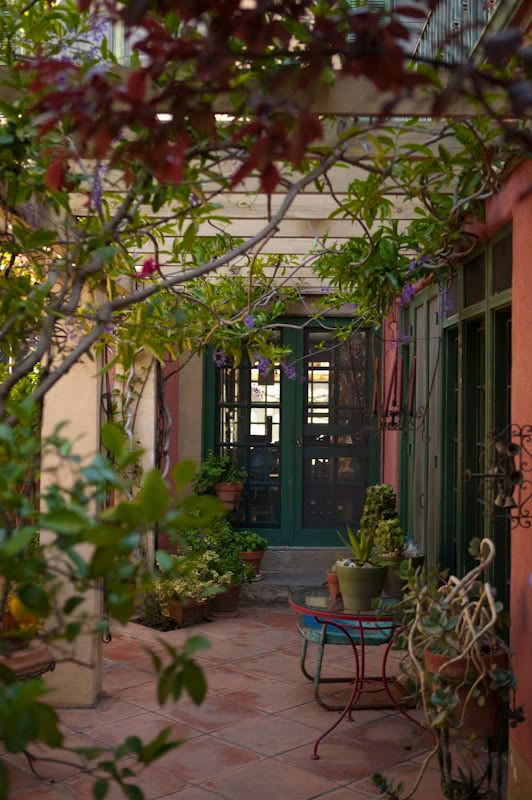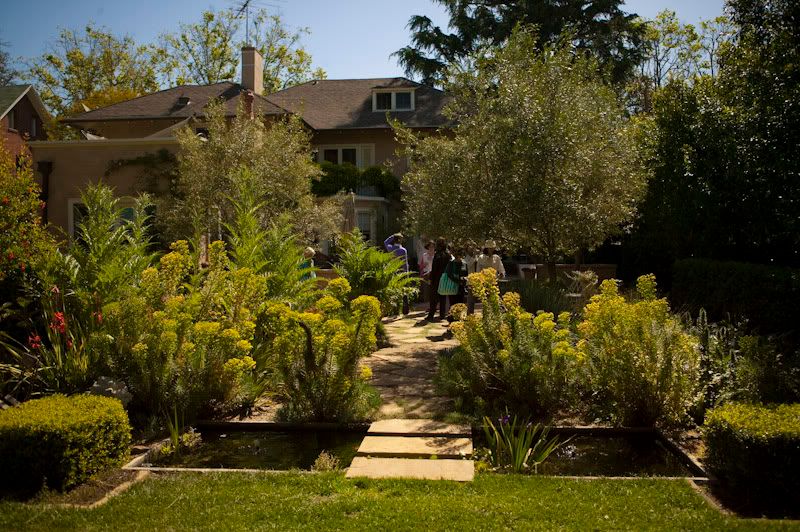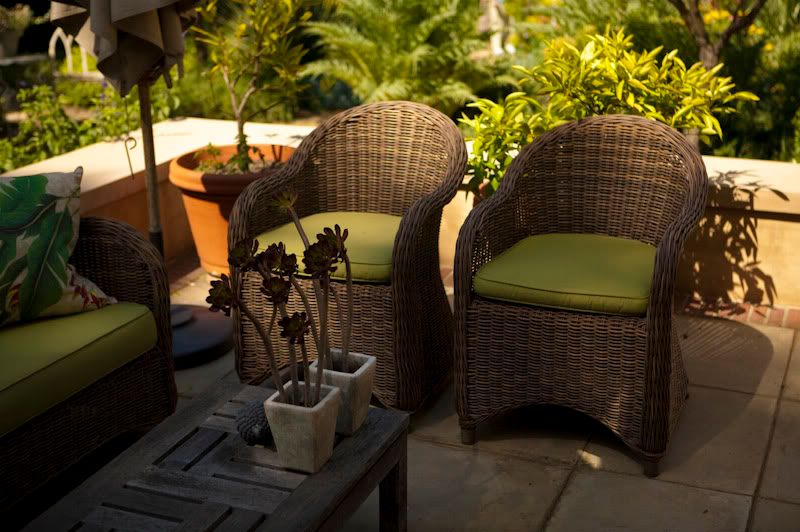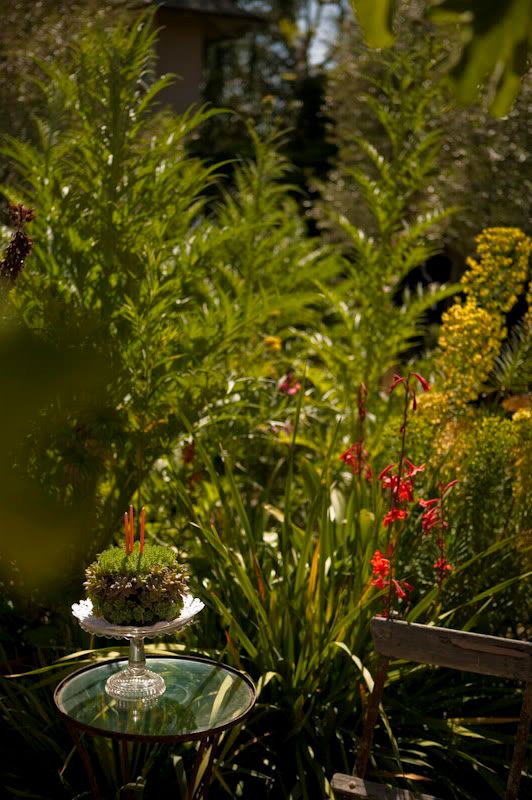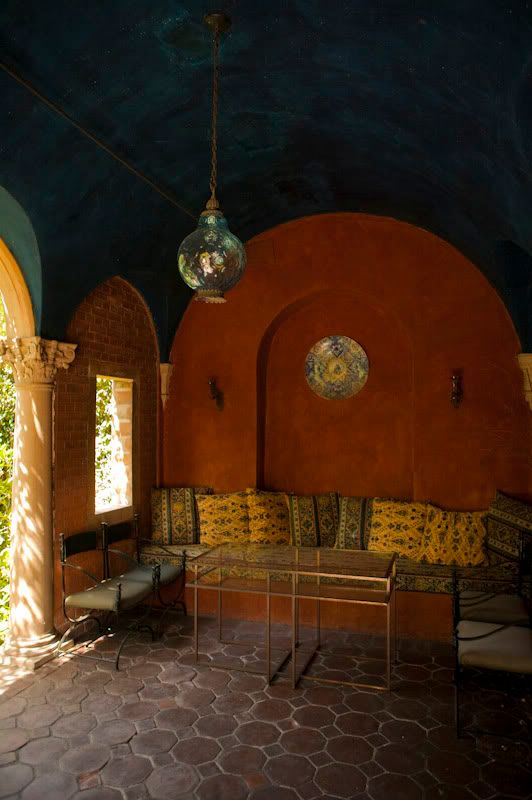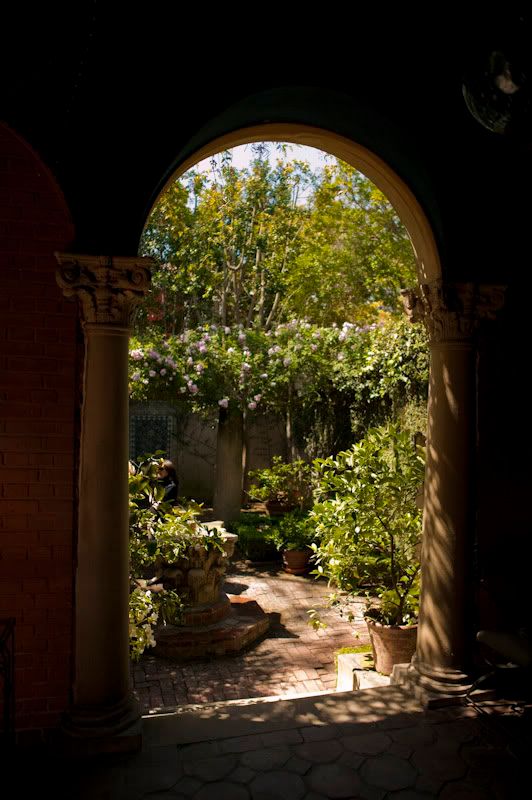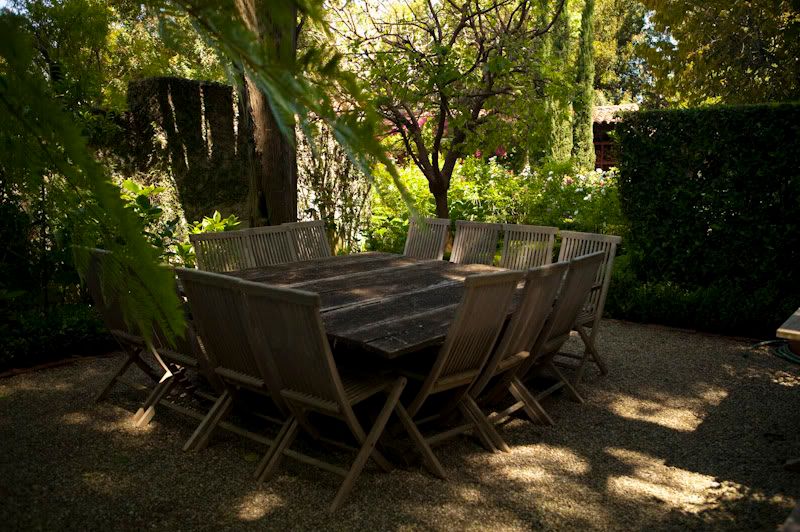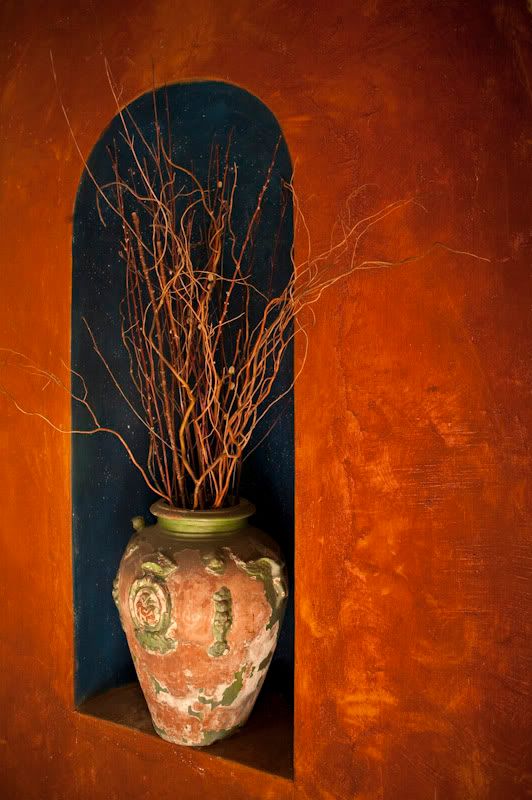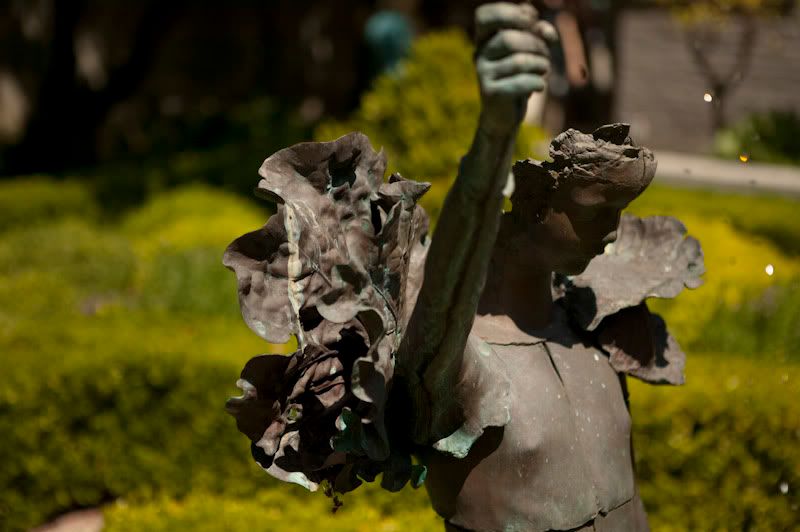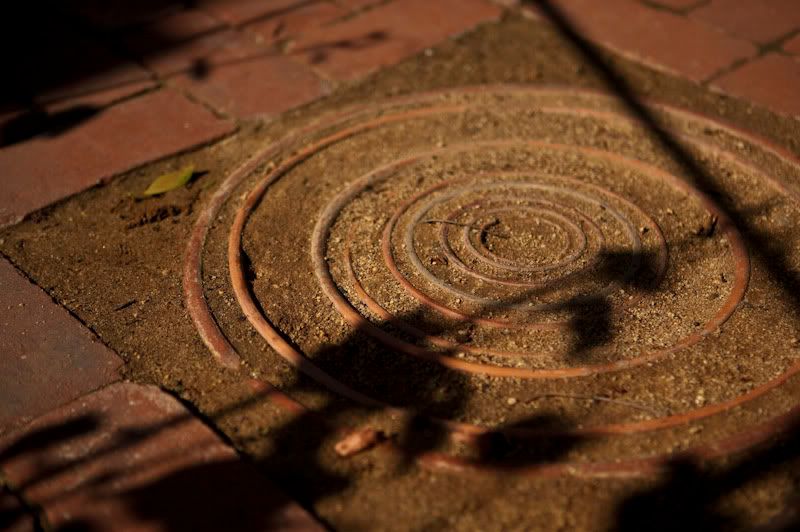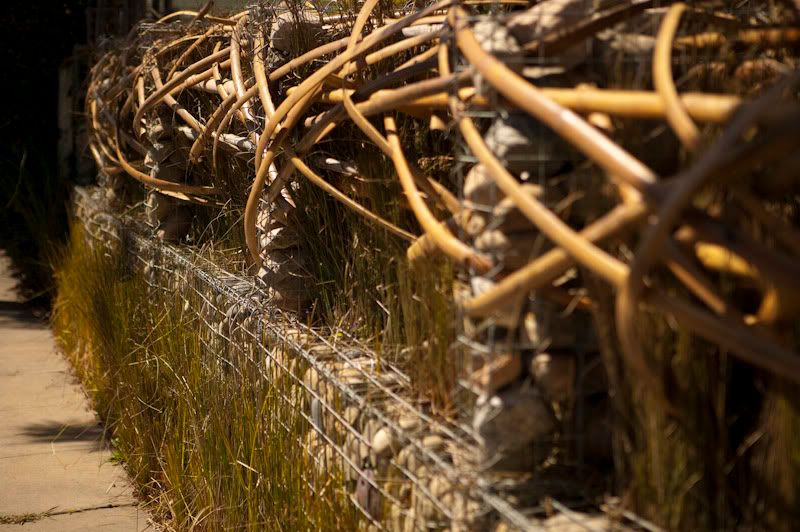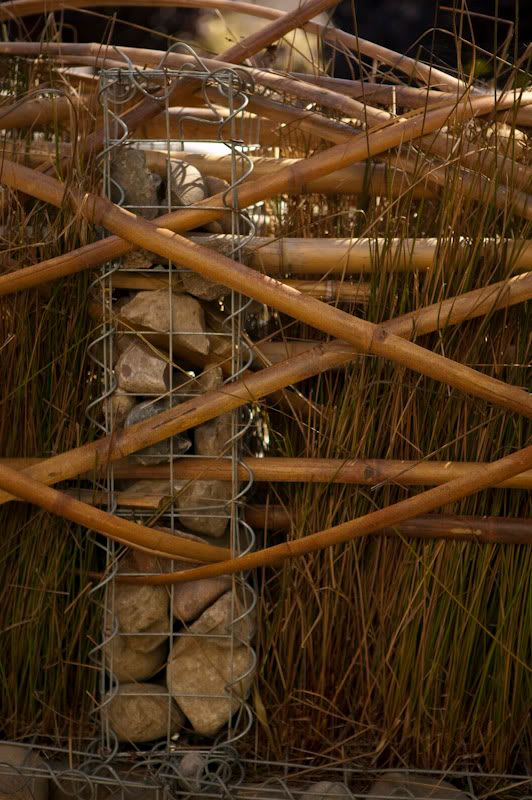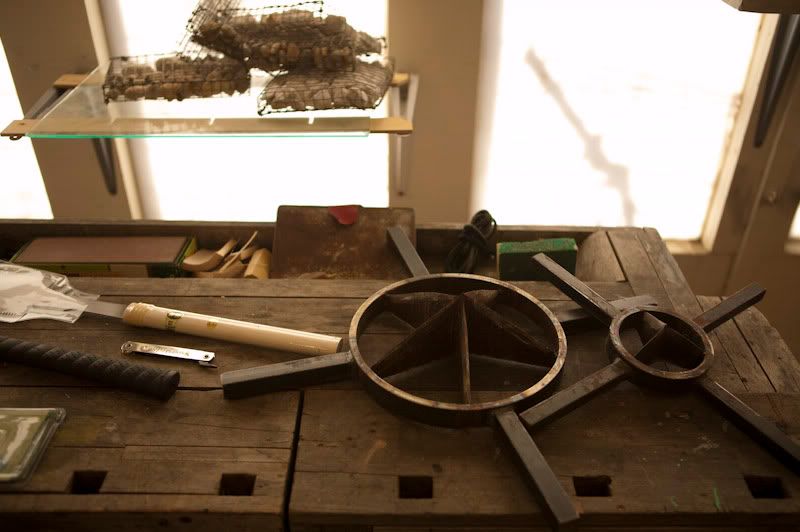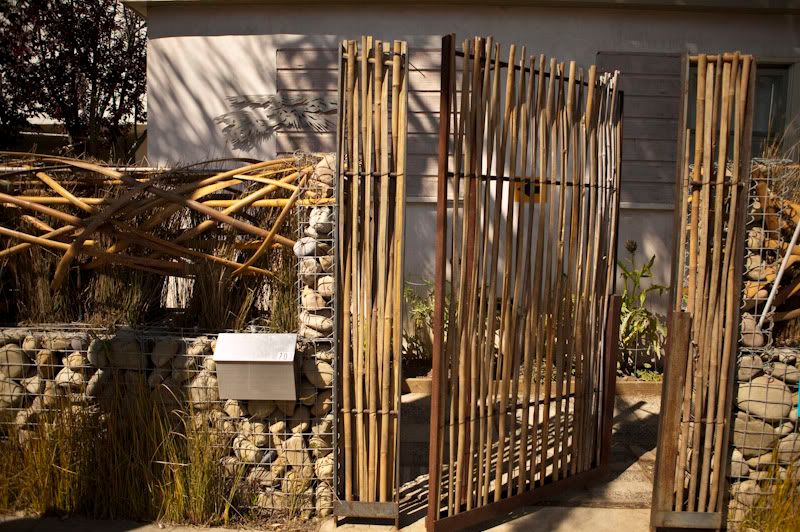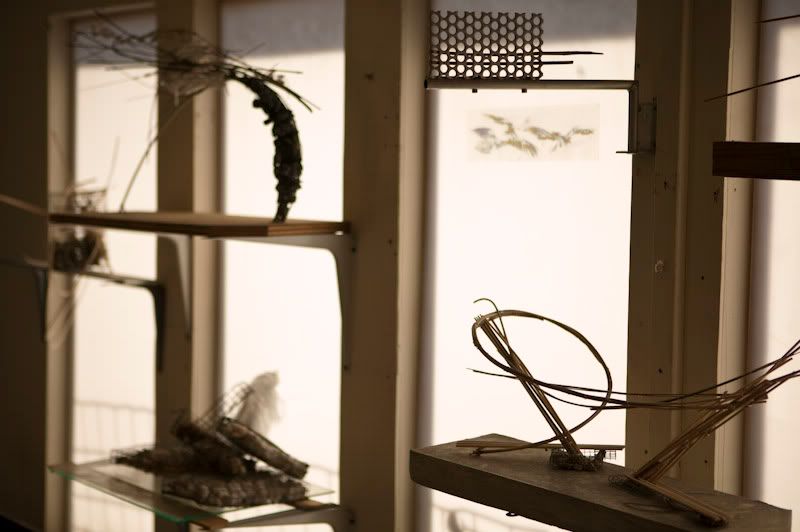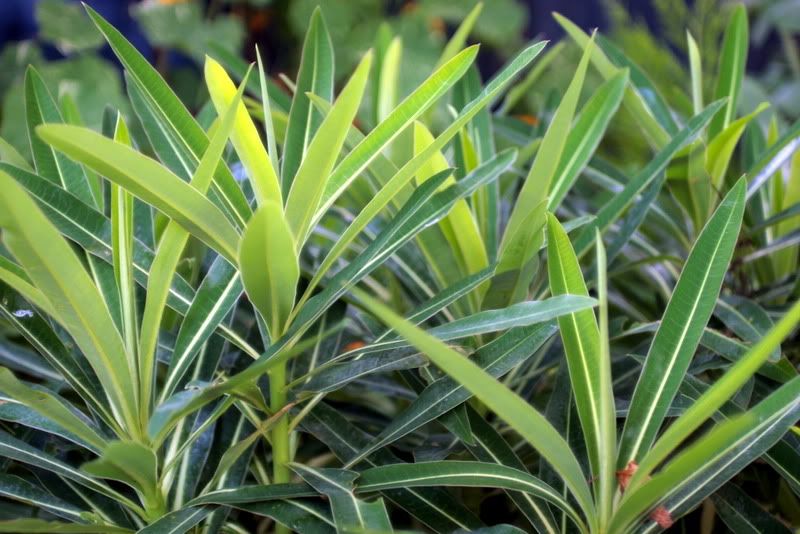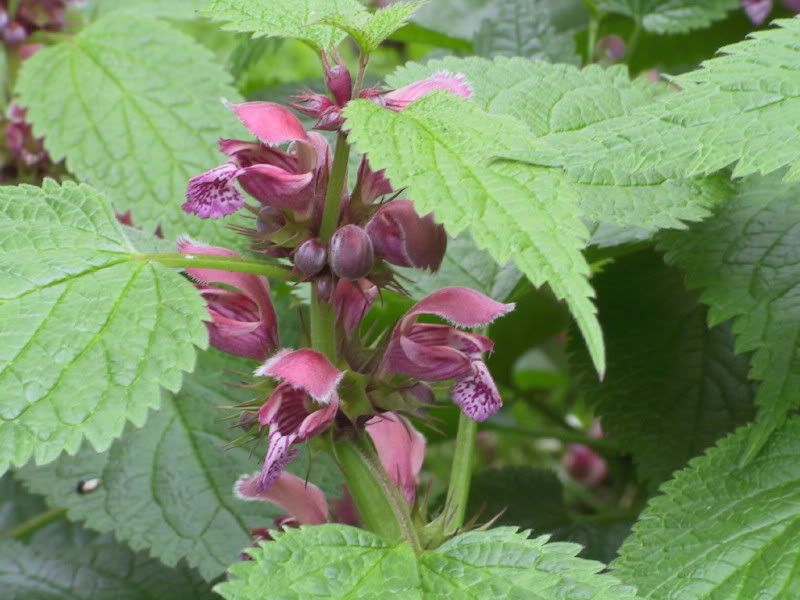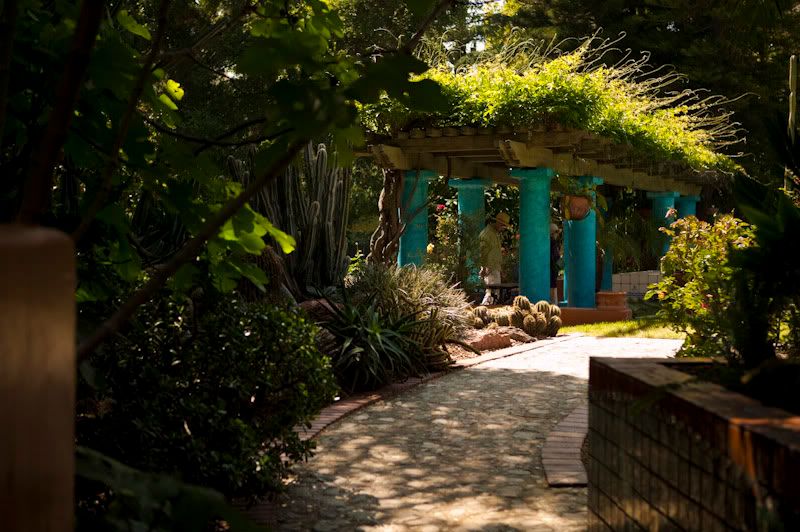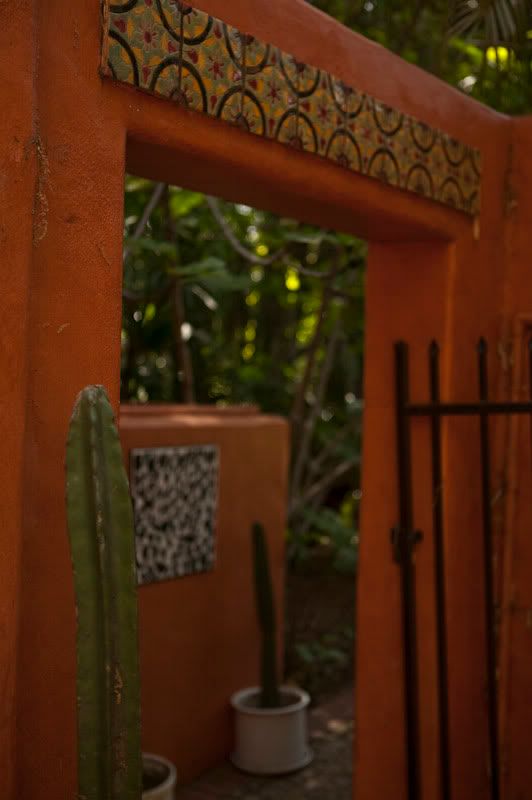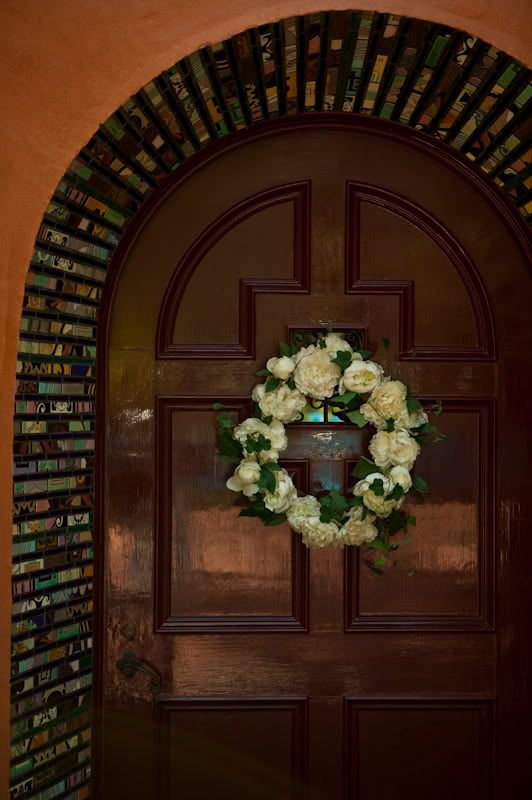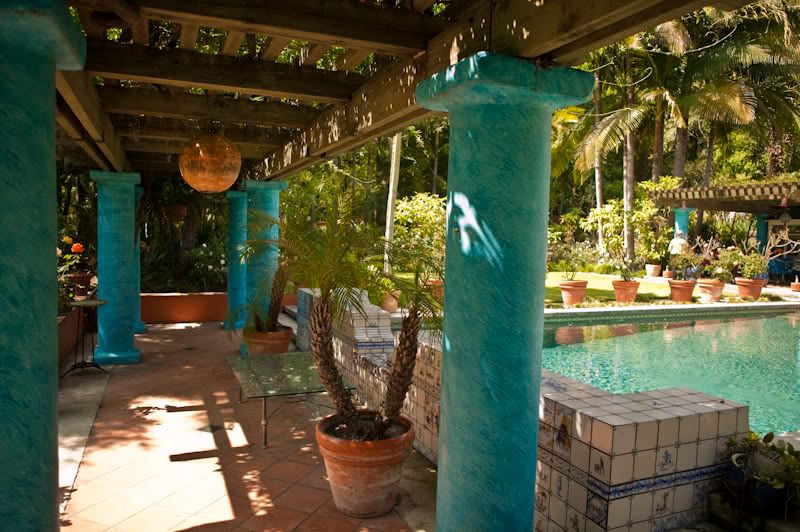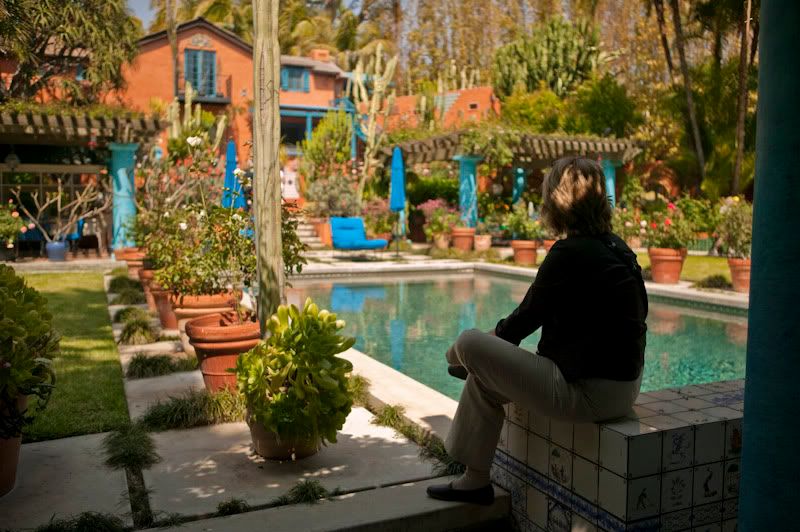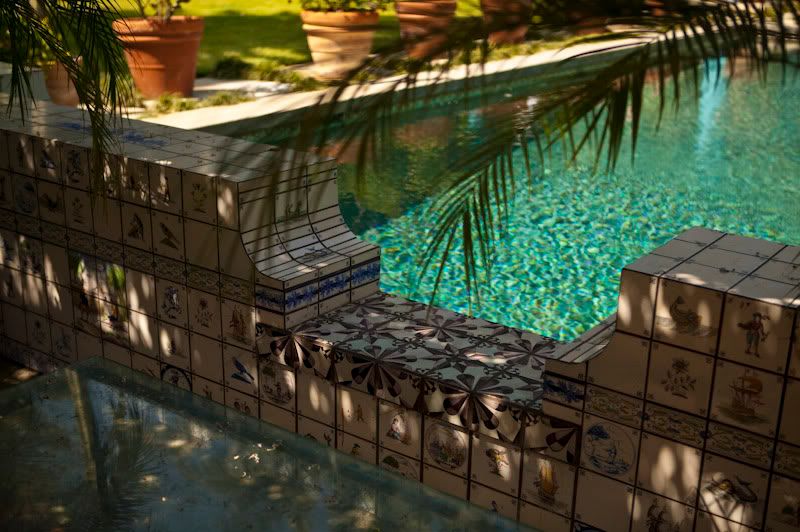Venice, California, Zone 10, Sunset Zone 24. There was no zonal denial on display on this tour. (What would zonal denial in zone 10 look like? One example I can think of offhand would be massive, stately homes with endless lawn and lavish rose gardens.) This tour was all about zonal rapture. As in flinging the doors wide.
Make that removing the doors entirely and rolling back the walls.
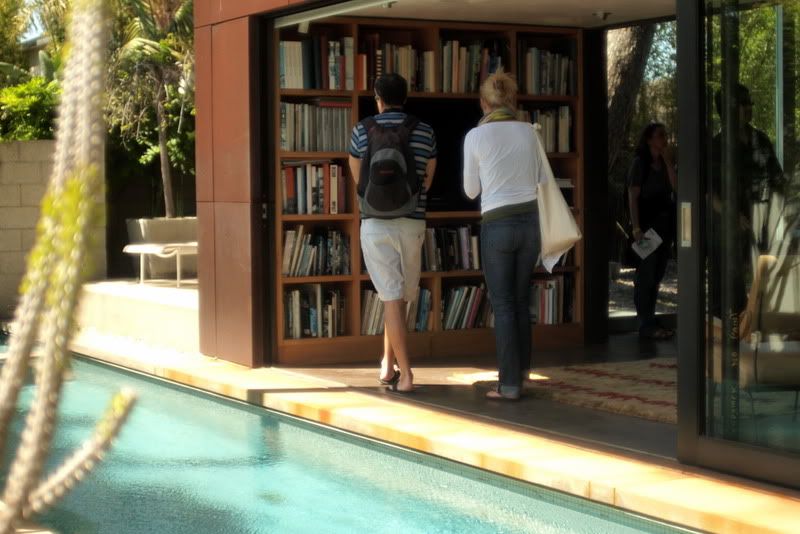
Even amongst the many creative enclaves that dot Los Angeles, a county as big as Baghdad, Venice stands out as a creative powerhouse, with “more acclaimed architects per capita than any other municipality in the United States” (from the tour guidebook “Venice Garden & Home Tour Benefiting the Neighborhood Youth Association’s Las Doradas Children’s Center.)
I shuffled and trudged like a garden tour zombie, part rapture and part poor shoe choice, following the yellow flags flying at tour houses, or just following the crowds. I never once looked at the map and guidebook handed out upon purchasing a ticket ($70 for 30+ houses) and after having the yellow bracelet strapped onto the wrist. For the next four hours, I walked through the narrow streets, head swiveling in all directions, trying to stay out of the way of bikes, taking pictures of non-tour houses, plants, dogs. Venice casts a powerful spell, and I found it impossible to approach the tour in any systematic way, so inevitably missed some houses. MB Maher was also on the tour and thankfully has photos of important houses I missed.
Another disclaimer. I am at the “blind chicken” level of photography, as in “even a blind chicken picks up a kernel now and then.” In perfect light, I manage all right, but this was mid-day, full sun, and many pictures I desperately wanted were simply unusable. So the photos will give an imperfect account for that reason alone. I attempted over and over again to photograph large architectural spaces, sunny garden scenes, and few of these were usable. (Took over 400 photos.)
Fences, gates, privacy. Venice answers these design questions in steel, concrete, wood, lucite, and other obscure, industrial-grade materials, and the designs spread like wildfire and are replicated throughout the neighborhoods. These are tiny lots of former beach bungalows, in many cases less than 1,000 square feet.
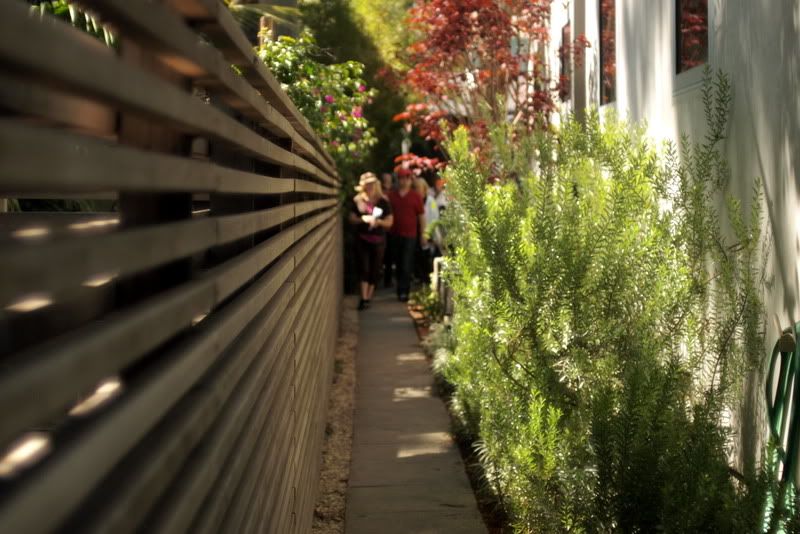
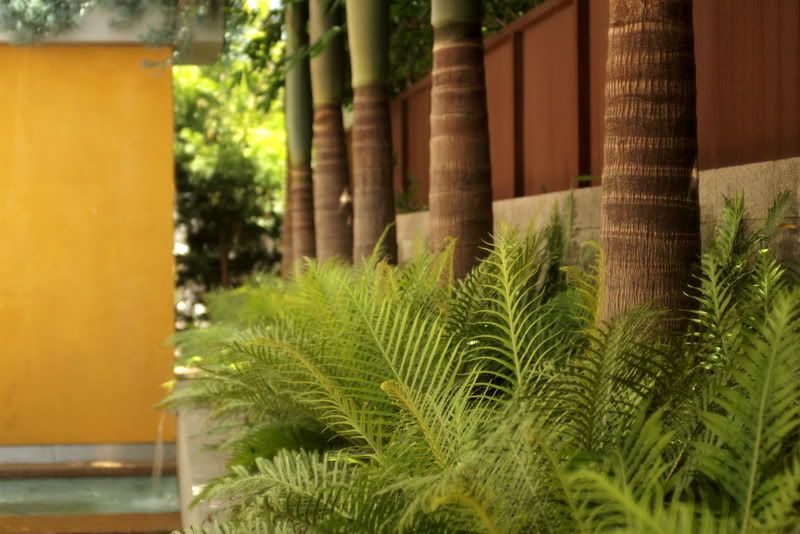
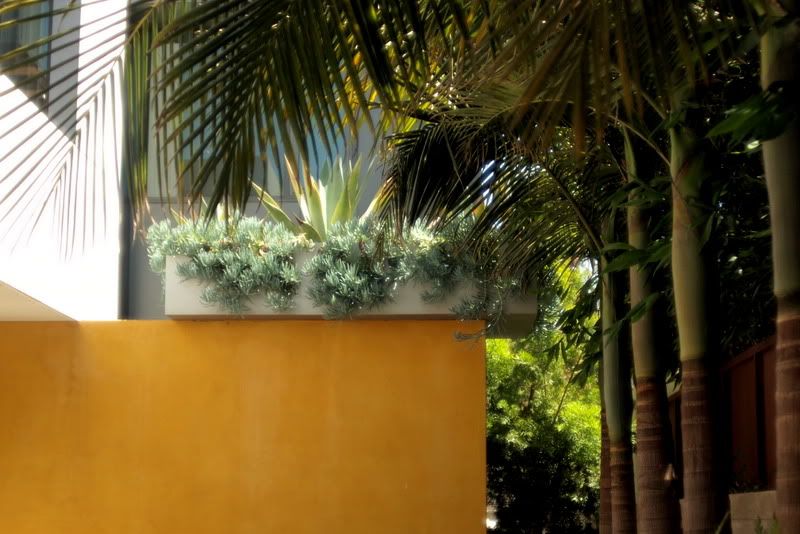
Over and over, it’s the solutions to privacy and exploiting every inch of space that are the revelations on this tour. Oh, yeah, and living without walls.
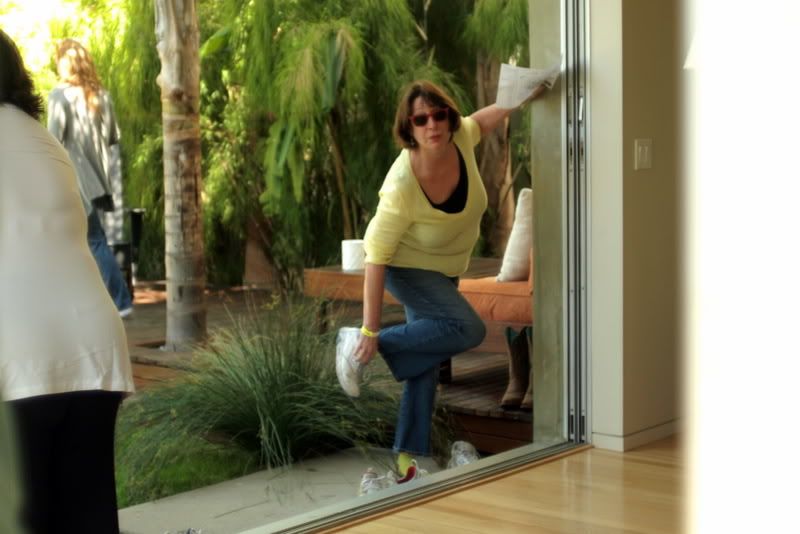
(Speaking of privacy, if you were on the tour and your photo is in my blog, apologies. These were small spaces with boat-loads of people.)
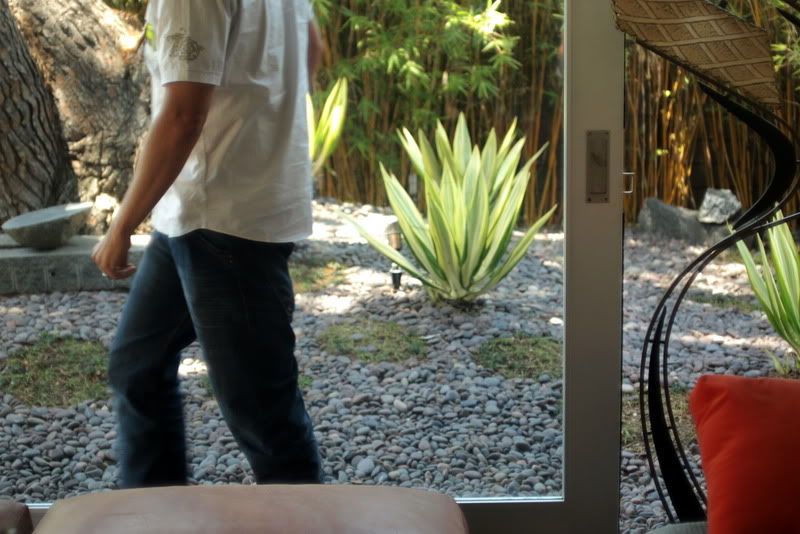
The docent thought it was getting chilly and rolled back this wall. Nice furcraea, huh? (The plant, Furcraea foetida ‘Variegata’)
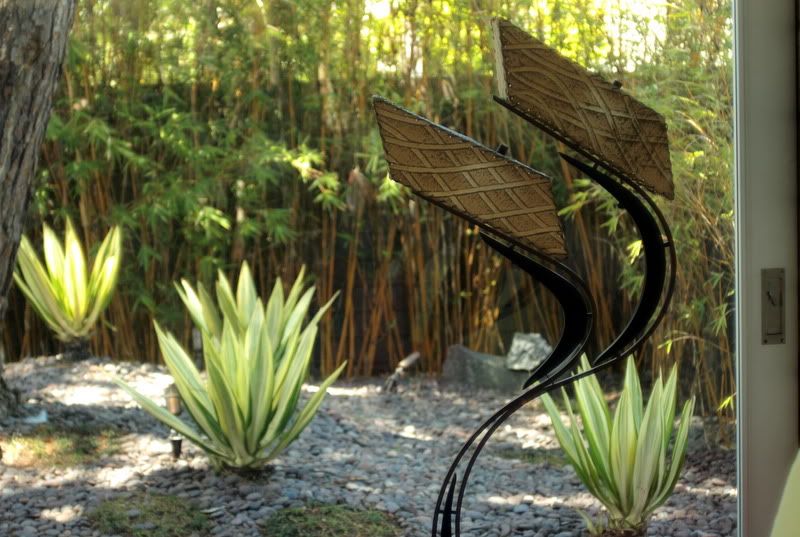
The above two photos and the next photo depict a house and garden that was a collaboration, with the garden being the work of Jay Griffith, iconic Venetian designer. (Who is a ringer for Derek Jacobi. At first sight of him, standing in a queue behind me, I wondered, What’s Derek Jacobi doing on the tour?) Mr. Griffith wandered through the crowds, fielding questions and tossing bon mots like molotov cocktails in his wake. He seemed to be having a great time. Scanning a seating area, he snorted, “Look at this ‘Do not sit’ sign. Might as well have it embroidered on the cushions. You know, I think they’re just anal enough to do it.” At times, his acerbity rivaled that of Unhappy Hipsters, but less tragic, more playful and mischievous. He’s the kind of guy my deceased mother-in-law, a former kindergarten teacher, would call Kid Mischief.
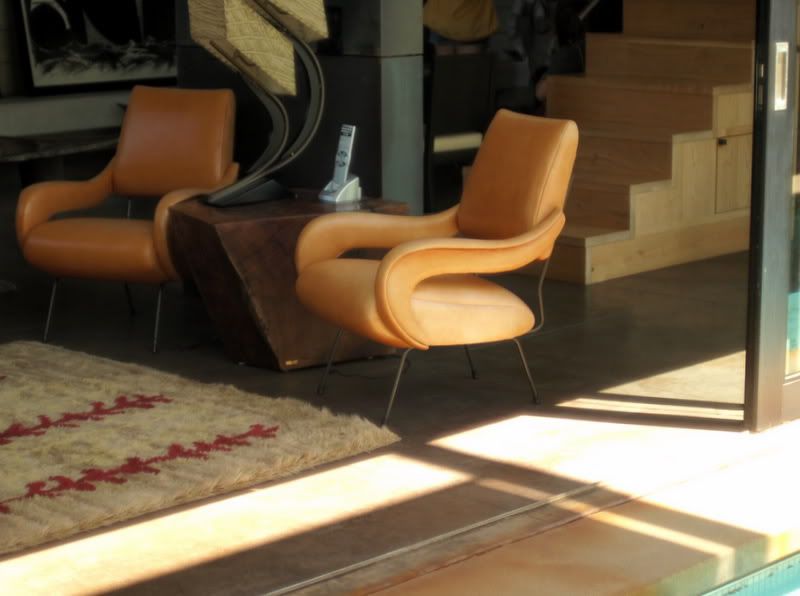
The vine on the fence is Solandra maxima, the Cup-of-Gold vine. A fence-eater with thick, magnolia-like leaves, huge golden goblets that I seem to remember are bat-pollinated. Good choice for espalier here.

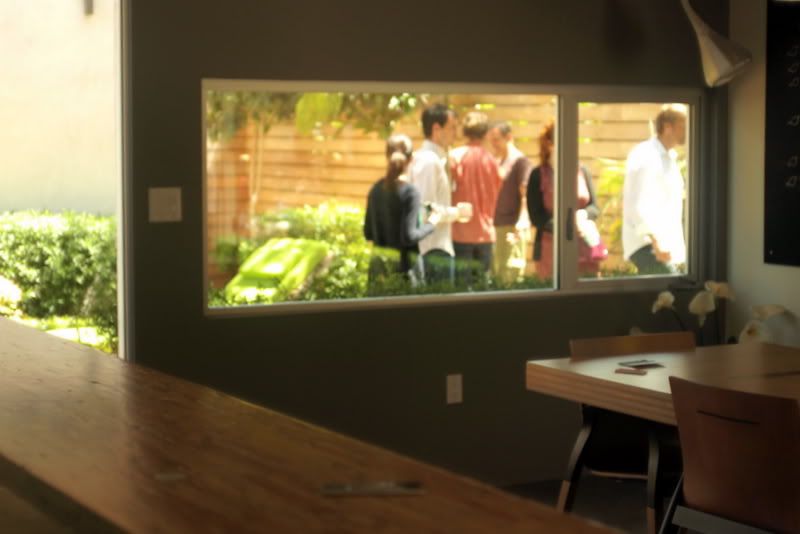
By now you’re asking, There are gardens on this garden tour, right? The line between house and garden, indoor/outdoor, was obliterated, and you’d be as likely to find a small planting of succulents mulched in gravel as you stepped across a threshold into a light-filled house as leaving it. Plants selected for such small spaces were architectural, tough and drought tolerant, rather than players in elaborate planting schemes. I like this high-contrast planting of reed orchids and dark phormiums:
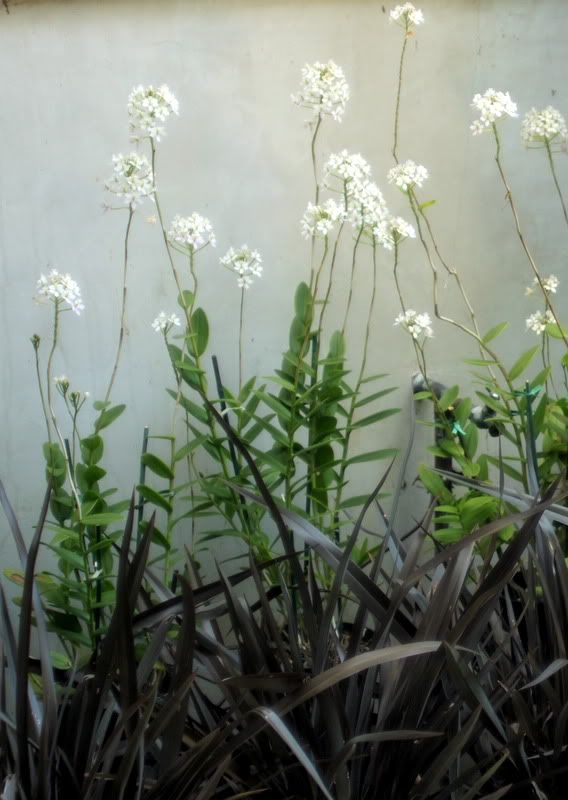
One of the most asked-about plants, and trust me on this because my photo is unusable, was an asparagus fern relative, Asparagus retrofractus. Gorgeous, shrubby, frothy rather than viney. Amazing texture for shade, to Zone 8.
One of my personal favorites was the Madagascar Ocotillo, cleverly planted to take advantage of its silhouette against a translucent fence of some lucite material.
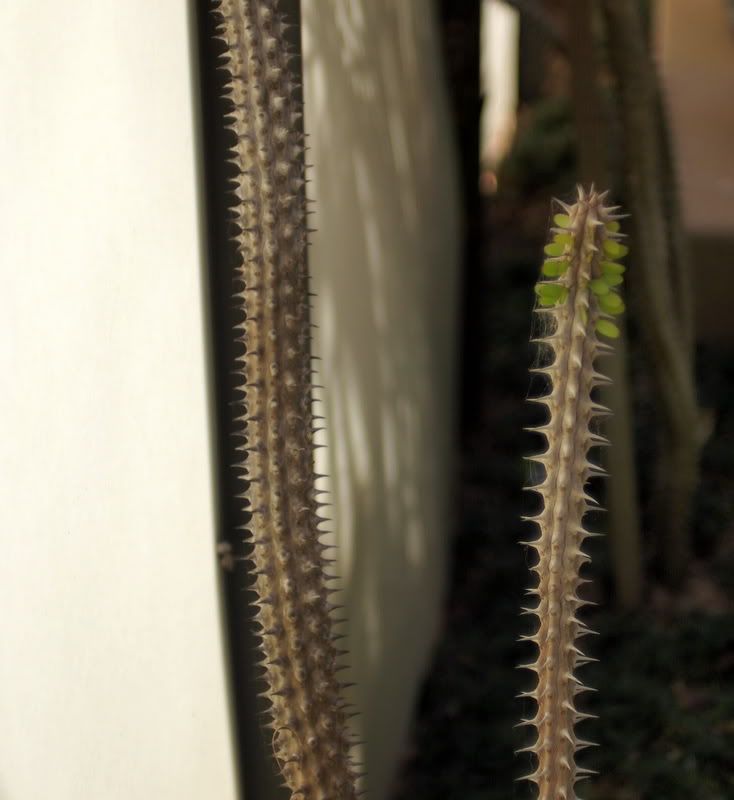
This photo cries out for an Unhappy Hipster comment, so feel free to supply your own.
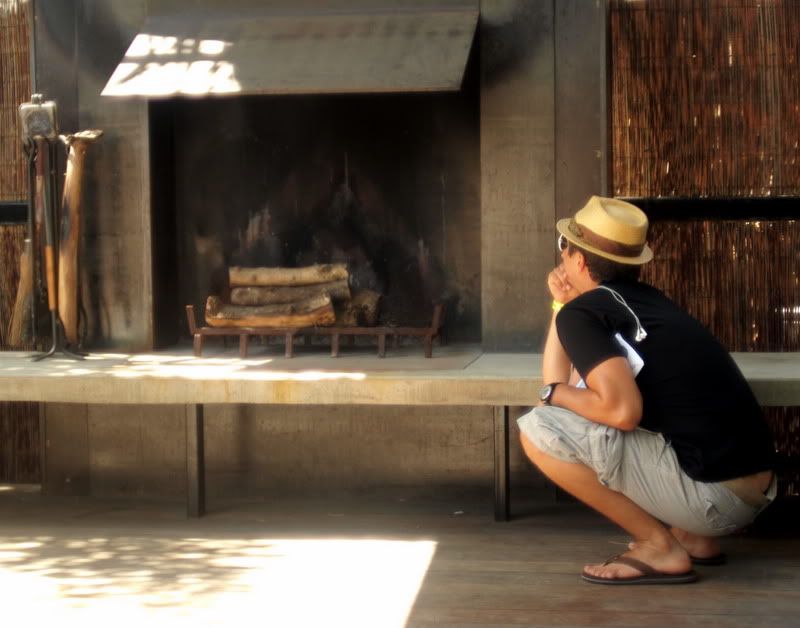
In this Balinese-influenced garden, an exquisite, obviously hand-made labor of love that was probably the most densely planted on the tour, I overheard a man note dismissively, “Nothing practical or low maintenance about it.” This was the garden’s “opium den.”

Details from the tour:
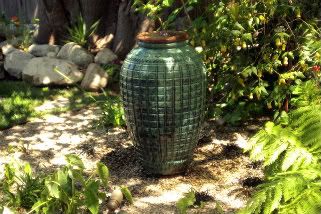
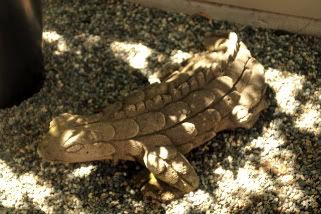
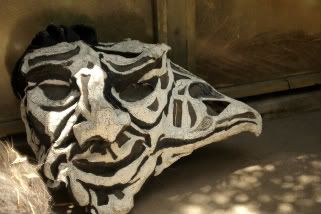
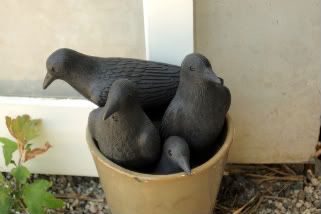
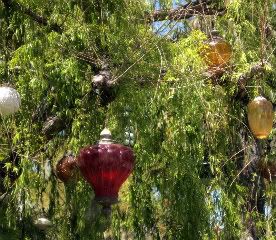
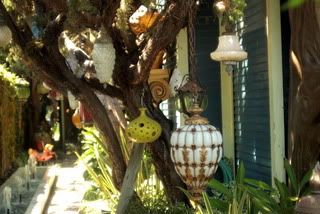
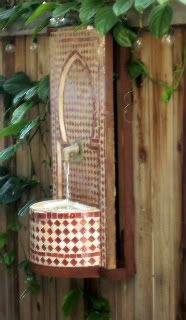


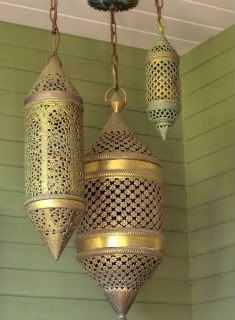
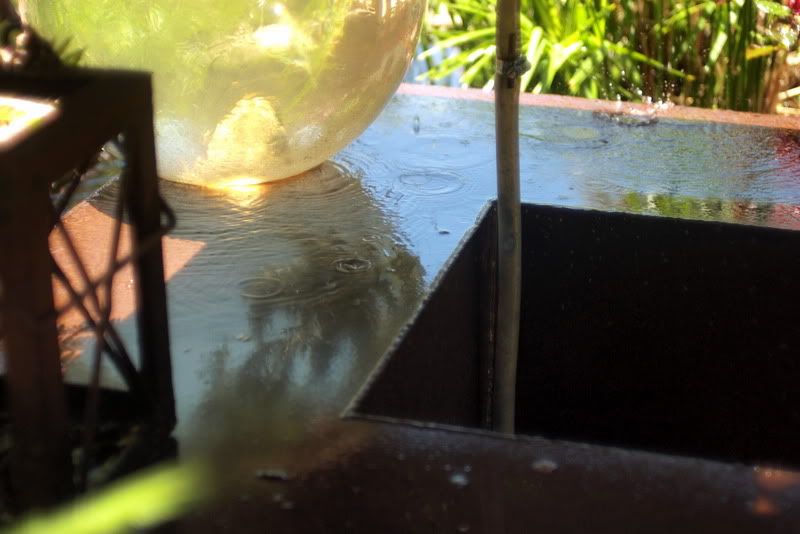
Snippets of overheard comments:
“Do you live here? (Usually asked of a doe-eyed docent, mostly architectural students.)
“This is sooo Venice.”
“We call them patio homes.”
“How much more??” (Kids, one day you’ll thank your parents that they took you to the Venice Garden and Home Tour rather than miniature golfing.)
“I love how the water in the fountain is pouring toward the house. Perfect feng shui.”
“It’s nice to be in a neighborhood where good design is the norm and not the exception.”
Ah, Venice.
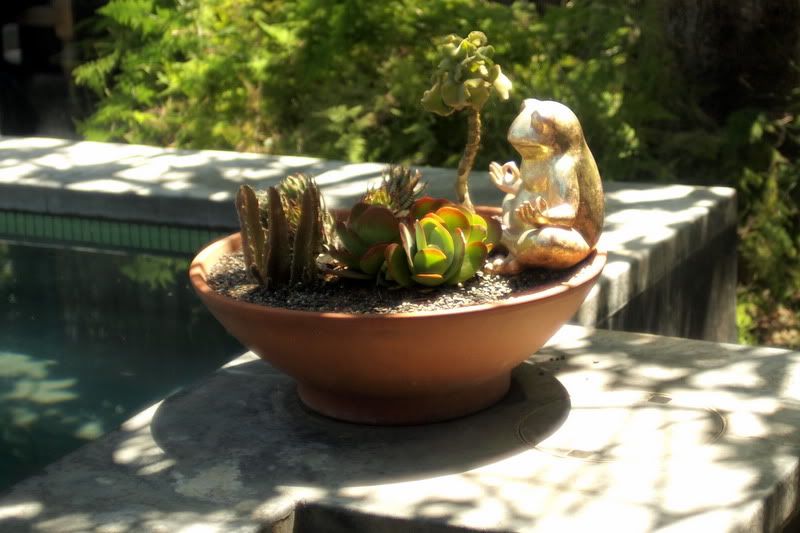

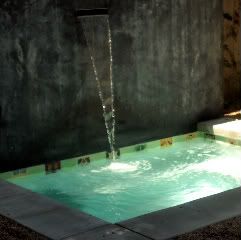
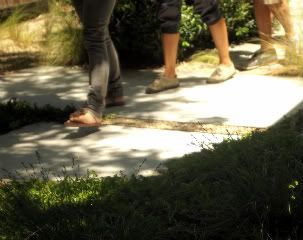
Navigating my way back on tired feet to where I parked my car required the assistance of friendly locals, who’d answer my shout, “Are you a local? Where’s Broadway?” with patience and courtesy.
When I catch up with MB Maher, I’ll post some of his photos too.

